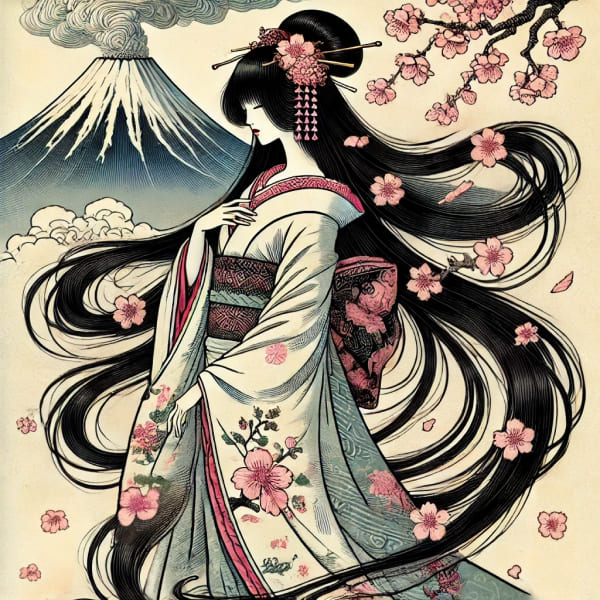
Konohanasakuya-hime: The Cherry Blossom Goddess of Japan
A goddess born of fire. A blossom that blooms for only a moment.
In the heart of Japanese mythology lives Konohanasakuya-hime—a radiant deity whose name means “Princess of the Blossoming Trees.” She is more than the spirit of cherry blossoms; she is the embodiment of beauty, fragility, and the fleeting magic of life itself.
Revered as both a divine mother and the guardian of Mount Fuji, Konohanasakuya-hime’s story bridges the heavens and the earth. Her legend—of trial by fire, motherhood, and impermanence—resonates deeply with Japan’s cultural soul, echoing in sakura festivals, Shinto shrines, and the quiet wonder of spring petals drifting in the wind.
In this article, we explore the origins, symbolism, and lasting legacy of this beloved blossom goddess—and how she continues to bloom in the hearts of people today.
Origins of the Cherry Blossom Goddess
Konohanasakuya-hime is the daughter of Ōyamatsumi, the mountain god, and the divine wife of Ninigi-no-Mikoto, the heavenly grandson of the sun goddess Amaterasu. According to ancient legends, when Ninigi questioned the divine origin of her unborn children, she courageously entered a burning birthing hut to prove her purity and the children's divinity. Emerging unscathed, she gave birth to three sons, including Hoori (Yamasachihiko)—an important ancestor in Japan’s imperial lineage.
Sakura and the Spirit of Impermanence
Deeply connected to sakura trees, Konohanasakuya-hime is a powerful symbol of transient beauty. Like the delicate cherry blossoms that bloom briefly in spring, she embodies "mono no aware", the uniquely Japanese sensitivity to the fleeting nature of life. Her story encourages reflection on mortality, renewal, and the passing seasons.
Mount Fuji’s Guardian Deity
Konohanasakuya-hime is also the principal guardian deity of Mount Fuji, enshrined at Fujisan Hongū Sengen Taisha, a major Shinto shrine at the base of the iconic mountain. She is revered as a protector against volcanic eruptions, and her worship is widespread through the Sengen shrine network that spans Japan, especially in regions surrounding Mount Fuji.
Cultural Legacy and Modern Relevance
Today, Konohanasakuya-hime remains a timeless symbol of natural beauty, maternal strength, and spiritual renewal. During cherry blossom season, visitors to her shrines offer prayers, reflect on the transience of life, and admire the sakura’s fleeting elegance. Her presence endures in art, literature, and seasonal festivals, continuing to inspire generations in Japan and beyond.